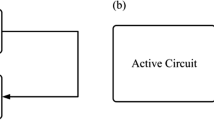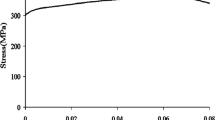Abstract
Braking is a process which converts a vehicle’s kinetic energy into mechanical energy which must be dissipated in the form of heat. During the braking phase, the frictional heat generated at the interface of the disc and pads can lead to high temperatures. This phenomenon is even more important than the tangential stress. The relative sliding speeds during contact are also important. The prediction of surface temperature for a brake rotor is regarded as an important step in studying brake system performance. The frictional heat generated on the rotor surface can influence excessive temperature rise which, in turn, leads to undesirable effects such as thermal elastic instability (TEI), premature wear, brake fluid vaporization (BFV) and thermally excited vibrations (TEV). The objective of this study is to analyze the thermal behavior of the full and ventilated brake discs of the vehicles using computing code ANSYS. The modeling of the temperature distribution in the disc brake is used to identify all the factors and the entering parameters concerned at the time of the braking operation, such as the type of braking, the geometric design of the disc and the material used. The results obtained by the simulation are satisfactory compared to those of the specialized literature.
Similar content being viewed by others
References
D. Majcherczak, P. Dufrenoy and M. Nait-Abdelaziz, Thermal simulation of a dry sliding contact using a multiscale model — Application to the braking problem, Thermal stresses 2001, Osaka (Japan), pp. 437–440, Juin, 2001.
F. Colin, A Floquet and D. Play; Thermal contact simulation in 2-D and 3-D mechanisms, ASME Journal of Tribology, 110 (1988) 247–252.
W. S. Chung, S. P. Jung and T. W. Park, Numerical analysis method to estimate thermal deformation of a ventilated disc for automotives, Journal of Mechanical Science and Technology, 24(11) (2010) 2189–2195.
F. Talati and S. Jalalifar, Analysis of heat conduction in a disc brake system, Heat Mass Transfer, 45 (2009) 1047–1059.
J. T. Kim and B. J. Baek, A numerical study of thermal performace in ventilated disk brake, Journal of the Korean Society of Tribologists & Lubrication Engineers, 17(5) (2001) 358–364.
Y. Choi, J. W. Choi, H. M. Kim and Y. W. Seo, Thermal dissipation performance of the ventilated brake disc having helical grooved vent, Journal of the Korean Society of Precision Engineering, 21(3) (2004) 117–123.
S. M. Kim, A study on thermal analysis in ventilated brake by FEM, Journal of the Korean Society of Machine Tool Engineers, 18(5) (2009) 544–549.
P. Hwang, H. C. Seo and W. Xuan, A study on temperature field and contact pressure in ventilated disc-pad brake by 3D thermo-mechanical coupling model, Journal of the Korean Society of Tribologists & Lubrication Engineers, 25(6) 421–426.
W. S. Chung, S. P. Jung and T. W. Park, Numerical analysis method to estimate thermal deformation of a ventilated disc for automotives, Journal of Mechanical Science and Technology, 24(11) (2010) 2189–2195.
T. Nakatsuji, K. Okubo, T. Fujii, M. Sasada and Y. Noguchi (2002) Study on crack initiation at small holes of onepiece brake discs, Society of Automotive Engineers, Inc 2002-01-0926.
T. Valvano and K. Lee (2000), An analytical method to predict thermal distortion of a brake rotor, Society of Automotive Engineers, Inc 2000-01-0445
M. D. Hudson and R. L. Ruhl (1997), Ventilated brake rotor air flow investigation, Society of Automotive Engineers, Inc 1997-01-033.
P. Hwang and X. Wu, Investigation of temperature and thermal stress in ventilated disc brake based on 3D thermomechanical coupling model, Journal of Mechanical Science and Technology 24 (2010) 81–84.
M. Burckhardt and J. Reimpell, Fahrwerktechnik: Bremsdynamik und Pkw-Bremsanlagen, Vogel-Verlag Wurzburg, 1. Auflage 1991, ISBN 3-8023-0184-6.
H. Dittrich and R. Lang, Finite Element Analysis of the Thermal Loads Acting on a Passenger Car Brake Disk, Automobiltechnische Zeitschrift, 86(6) (1984) 265–269.
P. F. Gotowicki, V. Nigrelli, and G. V. Mariotti, Numerical and experimental analysis of a pegs-wing ventilated disk brake rotor, with pads and cylinders, 10th EAEC European Automotive Congress — Paper EAEC05YU-AS04 — P 5, June 2005.
ANSYS analysis User’s Manual, version 11.0.
G. Dhatt and G. Thouzot, Une presentation de la methode des elements finis. Malouine S.A., Paris (1984) 539.
C. H. Galindo — Lopez, Evaluating new ways of conducting convective heat dissipation experiments with ventilated brake discs, Cranfield University, Bedfordshire, MK43 OAL, UK.
Author information
Authors and Affiliations
Corresponding author
Additional information
Recommended by Associate Editor Vikas Tomar
Ali Belhocine received his Magister Mechanical Engineering in 2006 from the University of Mascara, and he is currently preparing for his Ph.D at the University of Science and Technology (USTO), Oran, Algeria.
Rights and permissions
About this article
Cite this article
Belhocine, A., Bouchetara, M. Thermal behavior of full and ventilated disc brakes of vehicles. J Mech Sci Technol 26, 3643–3652 (2012). https://doi.org/10.1007/s12206-012-0840-6
Received:
Revised:
Accepted:
Published:
Issue Date:
DOI: https://doi.org/10.1007/s12206-012-0840-6




